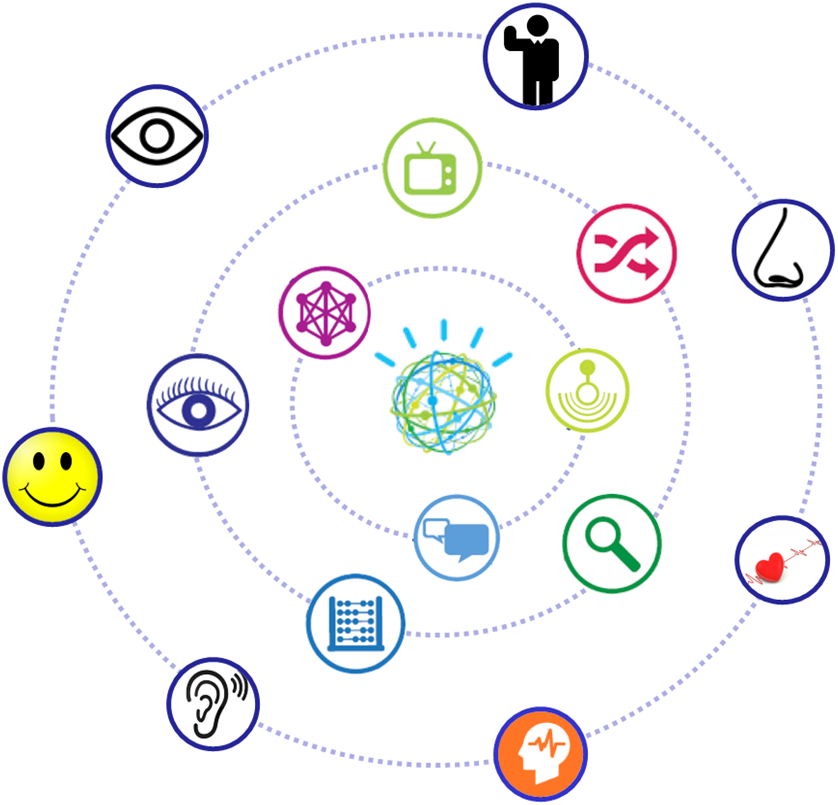Machine learning & cognitive computing
“Cognitive systems are inspired by the human brain, an organ that still has much to teach us.
—IBM scientist Arvind Sridhar
For several decades, the public has imagined sentient computers and robots that think and act like humans. However, it was always clear that this idea was a distant prospect.
Now we have entered the cognitive era where breakthroughs in computing are enhancing our ability to make sense of large bodies of data. This will provide guidance in making important decisions and revolutionizing industries.
Inspired by the human brain
Cognitive systems are inspired by the human brain, an organ that still has much to teach us.
Traditional computer architecture has reached its limits, as power consumption soars and the transmission delay between components is becoming increasingly tedious.
Indeed, when it comes to energy efficiency — measured in terms of the number of computations per energy unit on “unstructured” data — the human brain performs roughly 10,000 times better than the best man-made machines.

Machine learning
Cognitive computers are built to learn from their experiences by extracting useful information from unstructured data.
Interactive
Cognitive computers create deeper human engagement, using data about an individual to create more fully human interactions
Leverage expertise
Cognitive computers scale and elevate expertise, learning from experts in various fields and making that know-how available to broad populations
Internet of Things
Cognitive computers provide products, such as those connected to the Internet of Things, with the ability to sense the world around them and to learn about their users
Big Data
Cognitive computers allow us to make sense of large amounts of data, helping manage workflows, providing context, and allowing continuous learning, better forecasting, and improved operational effectiveness
Pattern recognition
Cognitive computers allow users to perceive patterns and opportunities that would be impossible to discover through traditional means
Improved Watson interfaces to the world
Innermost circle: Sources from the Internet.
Middle circle: Social media communication.
Outermost circle: Sensory information such as vision, hearing, or smell; vital functions such as pulse or brain activity; emotions and gestures.


